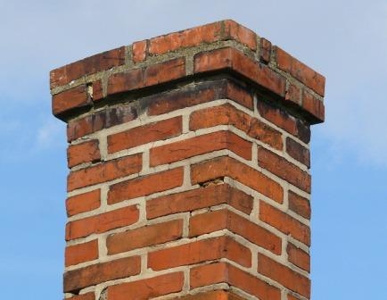Chimney Leaks: What to Watch For
Few things are more comforting in the cold weather months than relaxing in front of a warm, crackling fire. But what happens when water begins leaking into your home, turning a cozy evening into a homeowner’s nightmare? Chimney leaks can lead to significant water damage inside your home and even encourage mold growth if left unchecked. Understanding how chimney leaks occur and what to look out for can help you avoid costly water damage and the need for water damage restoration services.
Five Common Signs Of A Chimney Leak:- Water in the firebox
- Dampness/staining on interior house walls and ceiling
- Musty odors coming from the firebox or the attic
- White discoloration (efflorescence) on the chimney's external masonry
- Chimney liner damage
|
Common Causes of Chimney Leaks
Chimney leaks are more frequent than most people realize, especially in older homes. Water can seep into your house through various parts of your chimney and roof system, leading to damage not only in the chimney but throughout your home. Here's a breakdown of some of the most common causes of chimney leaks and how to spot them:
1. Damaged or Torn Chimney Flashing
One of the most common causes of water damage around a chimney is faulty flashing. Flashing is the material, often aluminum, surrounding the chimney where it extends out of the roof. Its job is to direct water away from the joint between the chimney and the roof. Over time, the flashing can tear, rust, or become loose, allowing water to seep in.
How to Spot It: Check for gaps between the chimney bricks and the flashing. If you notice tar paper or other sealants showing through the gaps, or if the flashing appears loose or torn, it’s time for repairs. Neglecting this can lead to water leaking inside your home and cause significant water damage.
2. Cracks in the Mortar Joints Between Bricks
The mortar joints, the areas between the bricks of your chimney, are also vulnerable to water intrusion. With time, the mortar can crack or crumble due to weathering. These cracks allow water to penetrate into your home and may even damage the interior walls and ceilings near the fireplace.
How to Spot It: Look closely at the mortar between the bricks, both inside and outside your chimney. Deep fissures or missing sections of mortar are telltale signs that water is getting in. If ignored, this can lead to significant water damage that might require water damage restoration services to fix.
3. Cracked Chimney Crown
The chimney crown, a slab of mortar or cement at the top of your chimney, is your chimney’s first line of defense against rainwater. Over time, the crown can develop cracks, allowing water to seep into the chimney. This may result in water damage to the surrounding area and create the ideal environment for mold growth.
How to Spot It: Inspect the top of your chimney for visible cracks. Small cracks can sometimes be repaired with sealant, but larger cracks will need to be addressed by a professional to avoid costly water damage and the need for water damage restoration.
4. Missing or Damaged Chimney Cap
Chimney caps are metal covers that sit atop your chimney to keep rain, debris, and animals out. Without a proper cap, rainwater can freely flow down into the chimney and your home, leading to water damage that could have easily been avoided.
How to Spot It: Simply look at the top of your chimney. If your cap is missing, damaged, or poorly fitted, you may need to replace it to avoid water damage.
Why Addressing Chimney Leaks Quickly is Crucial
Chimney leaks can lead to serious water damage, which might not be immediately noticeable until significant damage has already occurred. The resulting water damage can rot wood, weaken your home’s structure, and create a perfect environment for mold to grow, affecting the integrity of your home and your family’s health.
By addressing chimney leaks promptly, you can avoid costly repairs down the road and the need for extensive water damage restoration. Regularly inspecting your chimney for signs of wear and addressing issues as soon as they arise will keep your home safe, dry, and mold-free.
When to Call a Professional
If you notice any of these signs of water damage or chimney leaks, it’s important to call a professional before the problem worsens. Water damage restoration experts can assess the extent of the damage, remove water-damaged materials, and ensure that your home is safe and secure.
Don’t let chimney leaks ruin your winter. By being proactive, you can prevent water damage and enjoy your fireplace with peace of mind.


